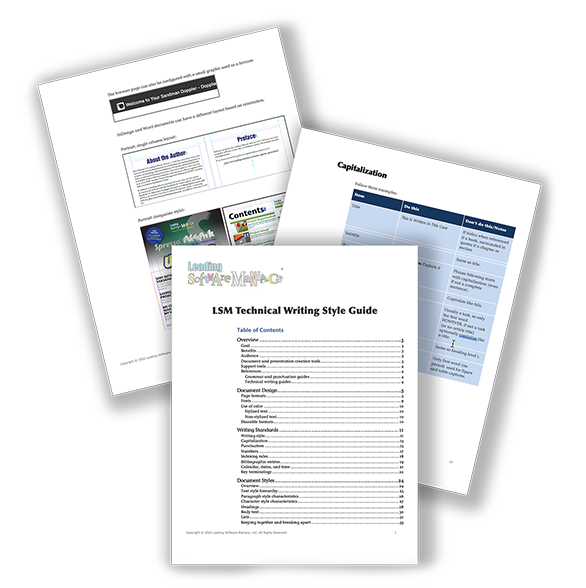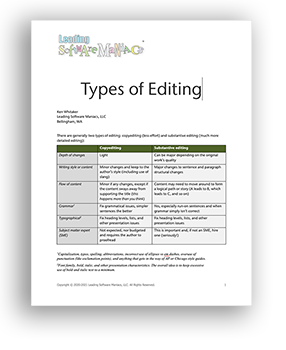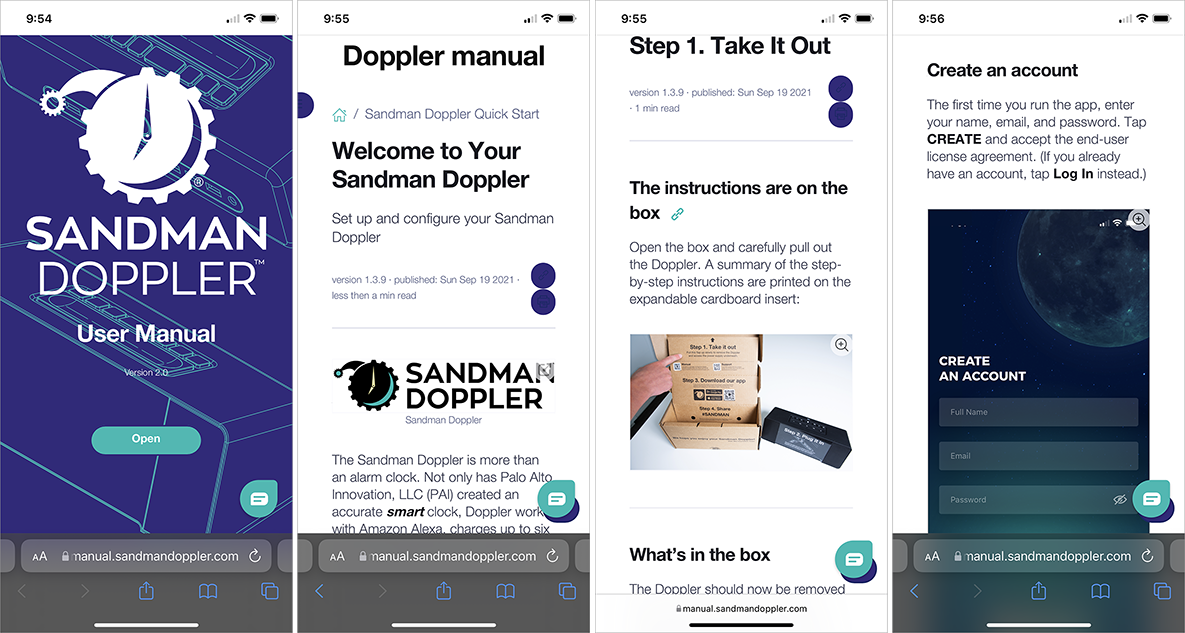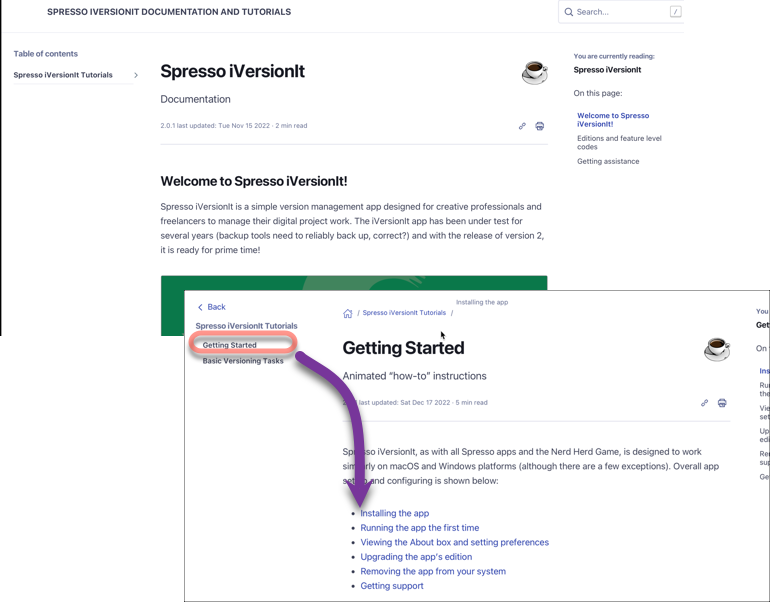
Technical Writing and Editing
Ken specializes in taking content and working with you to create written and visual results that is best suited for the intended audience. This can be in the form of books, eBooks, user guides, articles, blogs, brand identity guides, newsletters, and contract proposals. (He can technically write, too!)
“I absolutely LOVE how this turned out! Thank you so much, Ken, for everything.”
— Sherri S.
Ken was the editor for TechWell's Better Software magazine over five years. His responsibility included finding authors, editing each and every article, managing the editorial and production life cycle, and owning the magazine layout.
Using a variety of documentation tools
We create “how to” instructions for techie (hardware or software) products:
Internet of Things (IoT) “smart” device and software (for a “killer” Kickstarter product)
Cross-platform app designed for creative professionals (non-techies)
Interactive book creation guide to help children of all ages learn to read on their smart phone or tablet
Workbook designed for student and instructor (single-source) with accompanied presentations and video instruction
Traditional user documentation (created with Adobe InDesign) can be the perfect presentation for workbooks, textbooks, and manuals.
The documentation platform and layout you use all depends on the audience.
Great documentation benefits everyone if users:
Are informed
Achieve a sense of accomplishment
Rarely, if ever, need to contact technical support
Rather than traditional manuscript and page design, why not try newspapers, magazines, or even comix formats (InDesign and Illustrator)? If a manuscripts frequently changes, use an online documentation platform instead (Docsie).
We’ve even augmented (or “ditched”) user guides in favor of how-to video shorts (TechSmith Camtasia) and interactive PDFs (InDesign).
““Ken, this is an incredible start. I’m really glad I’ve found you as you seem to be the perfect person for this job. Thanks again.”
— Alex T.


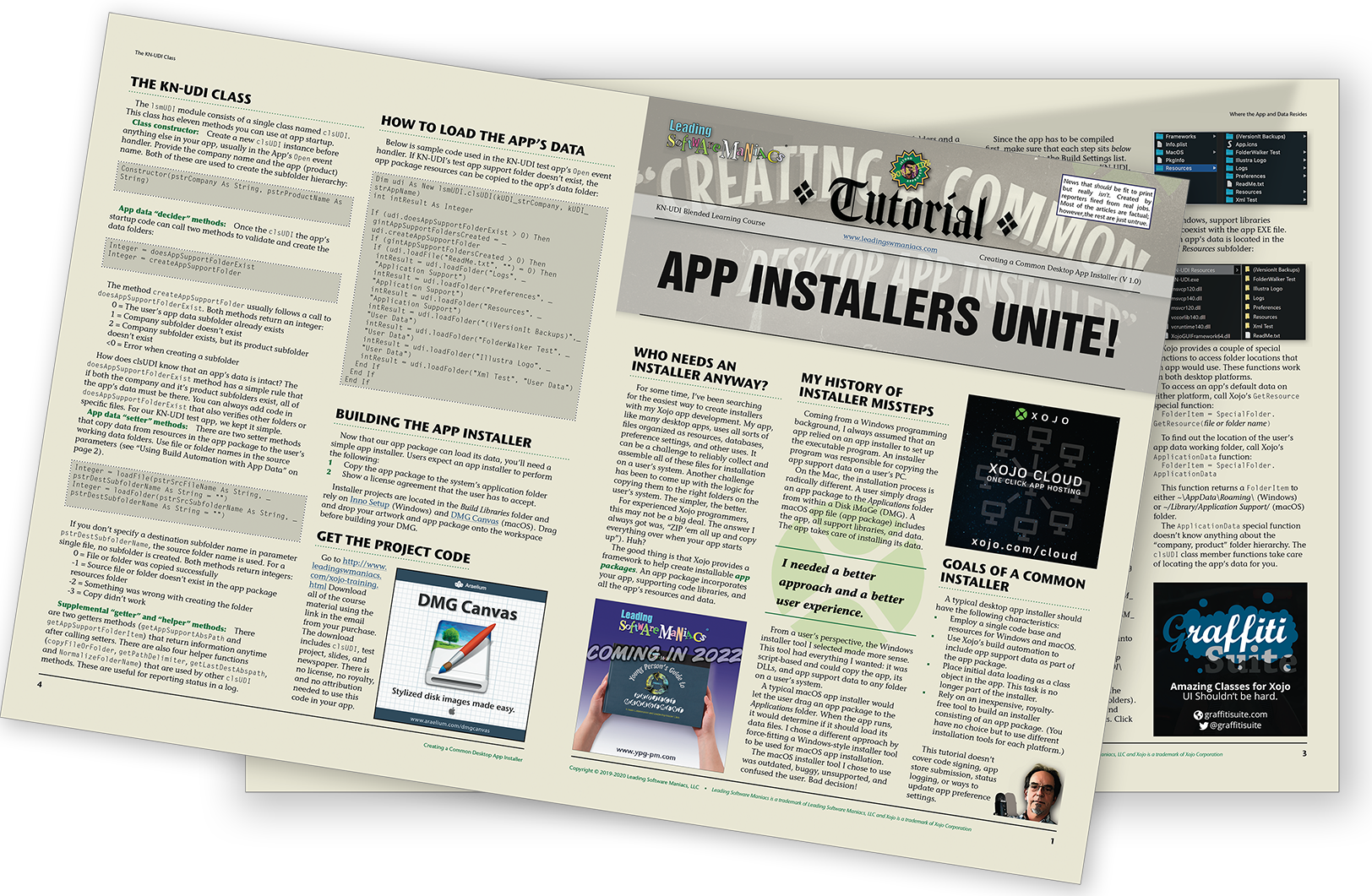
“We are very satisfied with the Quick Start guide. I definitely look forward to working on some future projects with you.”
—Josh H.
Writing: Create amazing documentation
Our Writing Style Guide is used for all of our technical documentation projects
Just to make sure a project gets off on the right foot, a T-shirt estimate of the min/max range of effort is agreed upon. Even with a highly iterative approach thoughout a project, we rely on at least three key checkpoints:
Sample: First-cut documentation in whatever format you want: user manual, interactive PDF, online, magazine, or newspaper. This usually includes a draft cover spread, front matter, sample chapter or two, and back matter.
Draft: All documentation written/edited for review.
Final handoff: Completed documentation along with specifications outlining how the documentation was written, organized, and built.
Documentation can be created using any of these incredible software tools:
Kindle Create: To produce Kindle eBooks and print-on-demand (POD) — more info
Adobe InDesign: The best way to produce high-quality long manuscripts, four-color print, and interactive PDFs
Adobe FrameMaker: Yes, even tried-n-true Frame (I was on the Frame Technology tech board years back)
Microsoft Word: Easy documentation than can actually have a professional InDesign look (if planned right!)
Docsie: The best online documentation platform (see “Docsie: The ultimate online tool” heading below)
Markdown: For more technical documentation (perfect for online APIs, simple instructions, and knowledge bases)
To learn more details of all that goes into technical writing:
There are two approaches to technical editing: copyediting and substantive editing.
Copyediting: This is light editing (faster to turnaround and lower cost)
Substantive: Heavy-duty editing (more impactful but more expensive)
“Ken brought professionalism, intelligence, positivism, resourcefulness, initiative, and a kind, helpful nature to our project. You will enjoy working with him!”
— Scott K.
Docsie: The ultimate online tool
Docsie makes online documentation a snap and—best of all—it is always up to date. It doesn’t matter how you view it: display monitor, tablet, or smart phone, every page is automatically “responsive” to the device. Here are some sample pages created for a killer Silicon Valley Kickstarter startup viewed on an iPhone:
I’ve learned the benefit of short, to-the-point instructions followed with short, animated GIF demonstrations. This is more than possible using online tools like Docsie.
Here is an example of a software product’s quick start and user guide that I created for Spresso iVersionIt:
To sign up for a trial Docsie account using the best online documentation tool on this planet, click below:
To find out about technical editing and writing:



